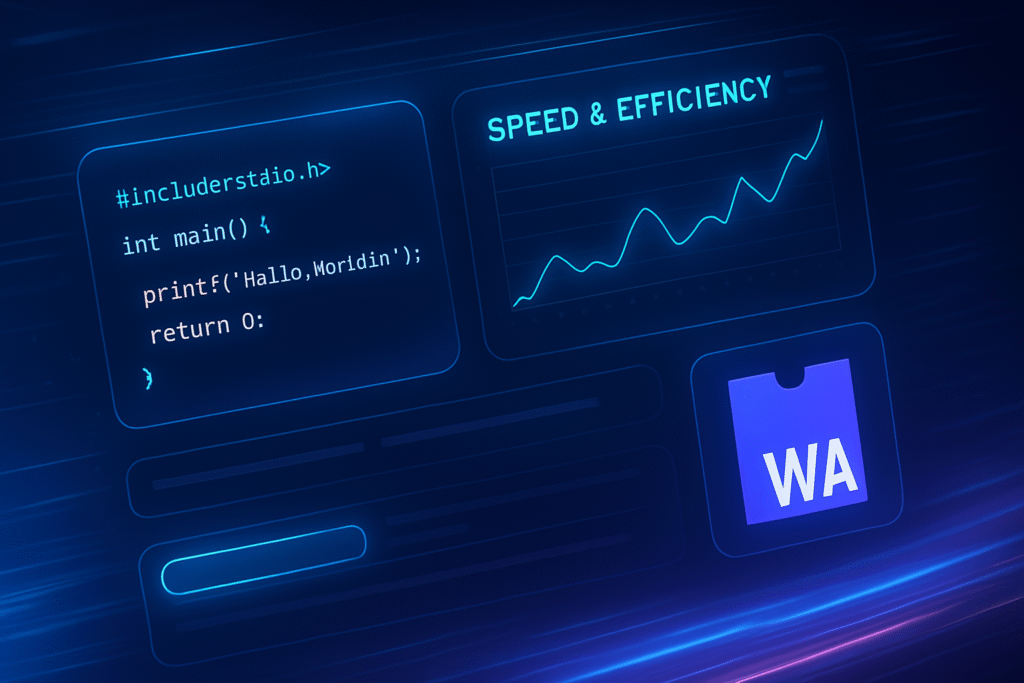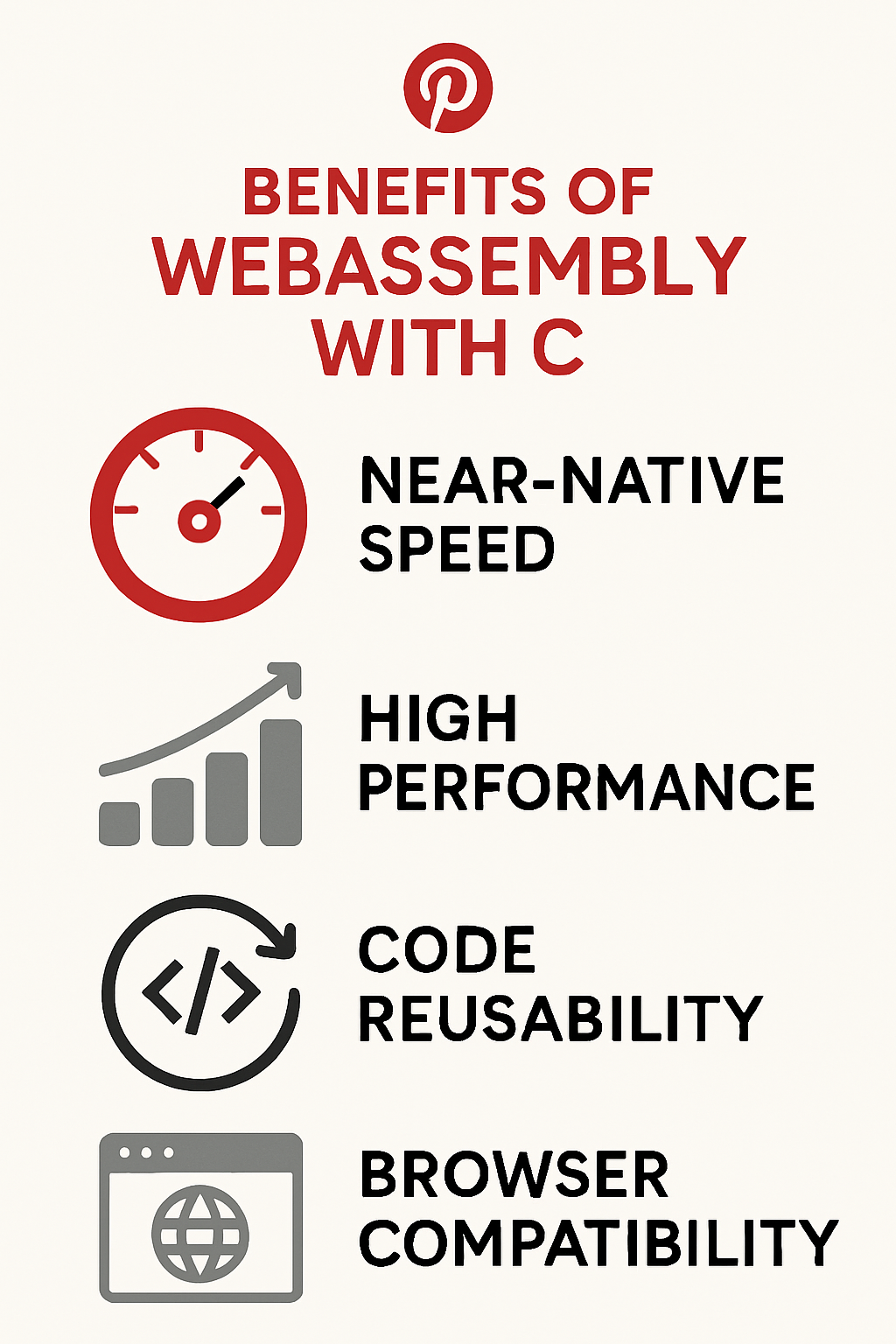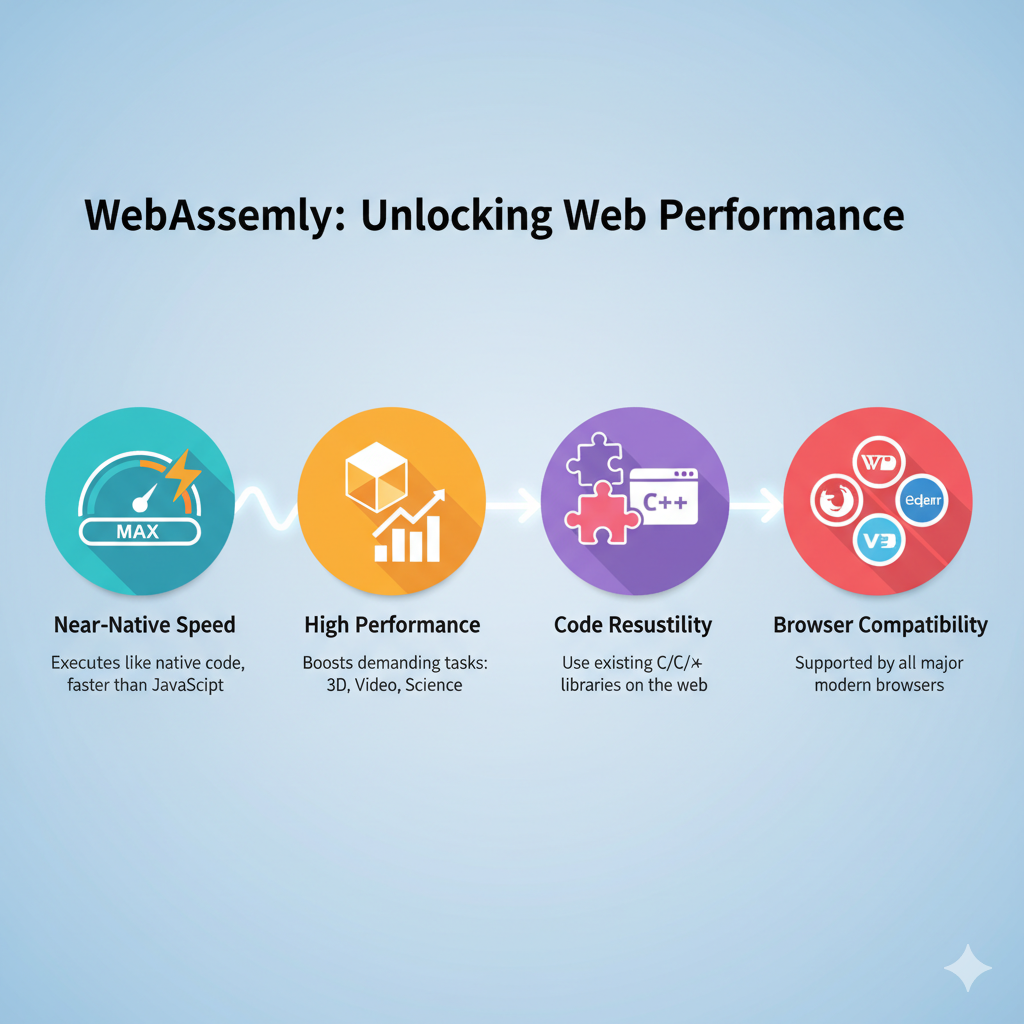
For years, web developers have been on a quest for native-like performance in the browser.
We’ve seen countless frameworks and libraries emerge, each promising to be the silver bullet.
But what if the solution wasn’t another JavaScript library, but something fundamentally different? Enter WebAssembly (Wasm).
I remember the first time I heard about WebAssembly. It sounded like a futuristic dream –
a way to run code written in languages like C, C++, and Rust directly in the browser at near-native speeds.
It felt like the web was finally growing up, ready to handle the demanding applications that were once the exclusive domain of desktop and mobile.
Fast forward to 2025, and that dream is a reality.
WebAssembly is no longer an experimental technology;
it’s a mature and powerful tool that’s reshaping the landscape of web development. In this post,
I’ll share my journey with WebAssembly and C, and show you how you can unlock a new level of performance for your web applications.

What is WebAssembly?
WebAssembly is a low-level, binary instruction format that runs in modern web browsers.
It’s designed to be a compilation target for high-level languages like C, C++, and Rust, allowing you to run code on the web at near-native speed.
Think of it as a way to break free from the performance limitations of JavaScript for computationally intensive tasks.
WebAssembly (abbreviated Wasm) is a binary instruction format for a stack-based virtual machine.
Wasm is designed as a portable compilation target for programming languages, enabling deployment on the web for client and server applications. [1]
This means you can take your existing C code, compile it to WebAssembly, and run it in the browser.
This opens up a world of possibilities for web applications, from high-performance gaming and video editing to complex scientific simulations and data analysis.
The Power of C and WebAssembly
C is a language known for its performance and low-level control.
By combining C with WebAssembly, you can bring that power to the web.
This is a game-changer for developers who need to squeeze every last drop of performance out of their applications.
Here are some of the key benefits of using WebAssembly with C:

Videos are added as random thoughts 💭 💭 💭 💭 💭
Getting Started with WebAssembly and C
So, how do you get started with WebAssembly and C?
The most common tool for compiling C and C++ to WebAssembly is Emscripten.
Emscripten is a complete open-source compiler toolchain that takes your C/C++ code and spits out a .wasm file, along with the necessary JavaScript glue code to load and run it in the browser.
Here’s a simplified workflow:
1. Write your C code: Start by writing your C code as you normally would.
2. Compile with Emscripten: Use the Emscripten compiler (emcc) to compile your C code to WebAssembly.
3. Load and run in the browser: Use the generated JavaScript file to load and run your WebAssembly module in your web application.
While the setup can seem a bit daunting at first, the documentation for Emscripten is excellent, and there are plenty of tutorials and examples to guide you through the process.
The Mozilla Developer Network (MDN) has a particularly good guide on compiling C/C++ to WebAssembly [2].
Real-World Use Cases
WebAssembly is already being used in a wide range of applications, from well-known products to innovative new projects.
Here are a few examples:
Google Earth: The web version of Google Earth uses WebAssembly to render the entire planet in your browser.
Figma: The popular design tool Figma uses WebAssembly to power its high-performance rendering engine.
AutoCAD: Autodesk has brought its flagship CAD software to the web using WebAssembly.
Gaming: Many game engines, such as Unity and Unreal Engine, now support exporting to WebAssembly, allowing for high-quality 3D games in the browser.
These are just a few examples, but they demonstrate the power and versatility of WebAssembly.
As the technology continues to mature, we can expect to see even more amazing applications emerge.
The Future of WebAssembly
WebAssembly is still a relatively young technology, but it’s evolving rapidly. The WebAssembly Community Group is actively working on new features and proposals, such as:
Threads: Bringing multi-threading to the web for even greater performance.
SIMD (Single Instruction, Multiple Data): Allowing for parallel processing of data.
Garbage Collection: Making it easier to use high-level languages that rely on garbage collection.
As these features become more widely available, WebAssembly will become an even more powerful and essential tool for web developers.
It’s not a replacement for JavaScript, but rather a powerful companion that allows us to push the boundaries of what’s possible on the web.
Conclusion
My journey with WebAssembly and C has been an exciting one.
It’s opened my eyes to a new world of possibilities for web development.
The ability to run C code in the browser at near-native speeds is a game-changer, and I believe we’re only just scratching the surface of what’s possible.
If you’re a web developer looking to build high-performance applications, I highly encourage you to explore WebAssembly.
It’s a technology that’s here to stay, and it’s only going to become more important in the years to come.
References
[1] [WebAssembly – MDN]()
[2] [Compiling a new C/C++ module to WebAssembly – MDN]()
